Abstract
A simple, rapid procedure for the presumptive identification of anaerobic bacteria has been evaluated. Two hundred and thirty-five clinical isolates were identified using gas-liquid chromatography and 3-ml volumes of a few selected test media. These test media were stored aerobically and incubated in GasPak anaerobic jars. The average incubation time was 39 h. This procedure, when compared to the results of our standard identification procedure, correctly identified 98% of the isolates to the genus level, 83% to the species level, and 83% of Bacteroides fragilis and Bacteroides melaninogenicus to the subspecies level. Fifty-three of the isolates were also identified by using 0.5-ml volumes of test media stored, inoculated, and incubated in an anaerobic glove box. The 3-ml-and the 0.5-ml-volume procedures correctly identified comparable percentages of the 53 isolates.
Full text
PDF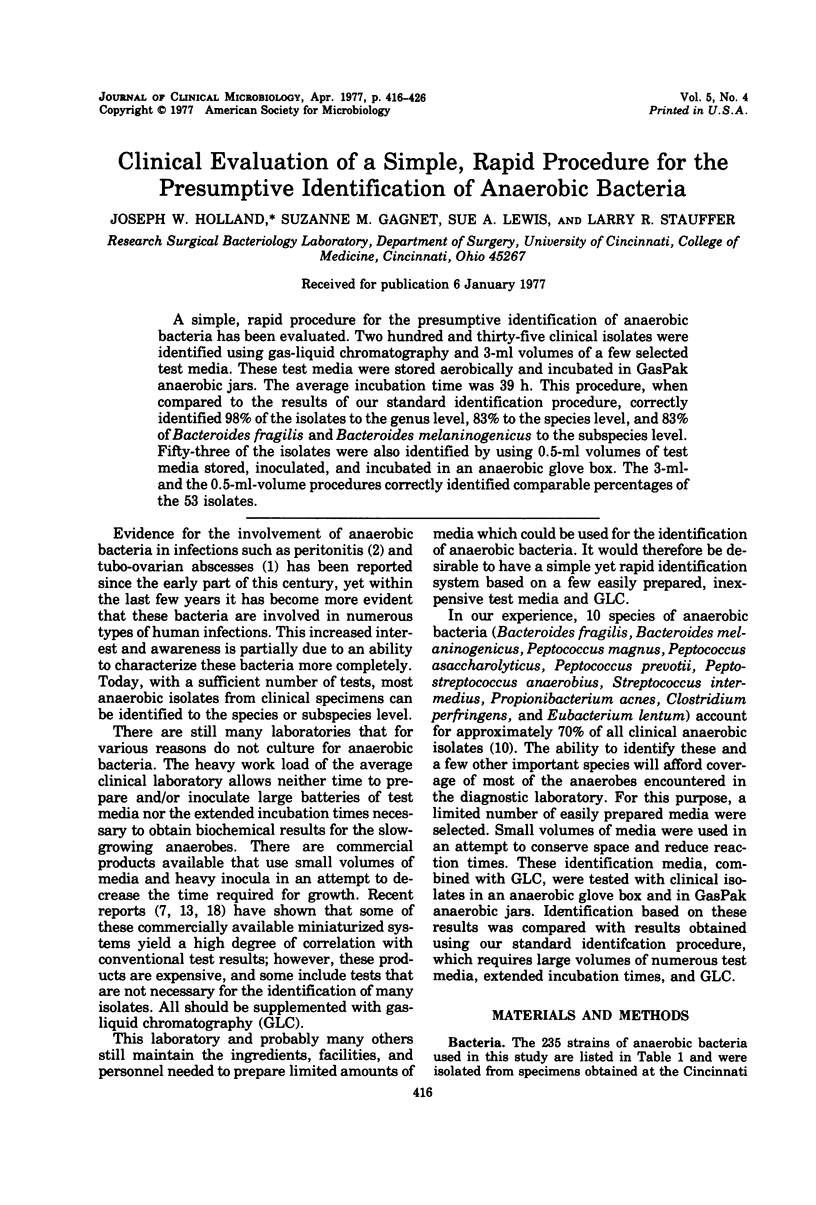
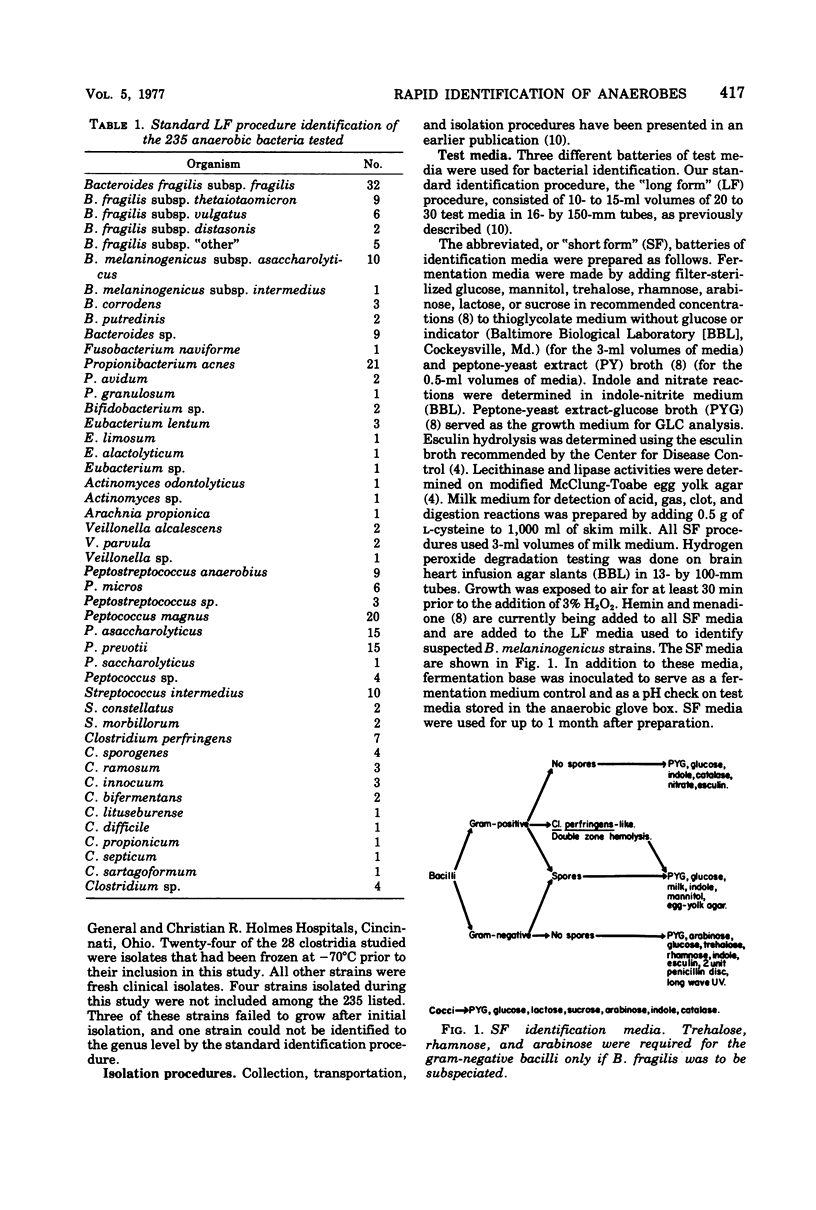
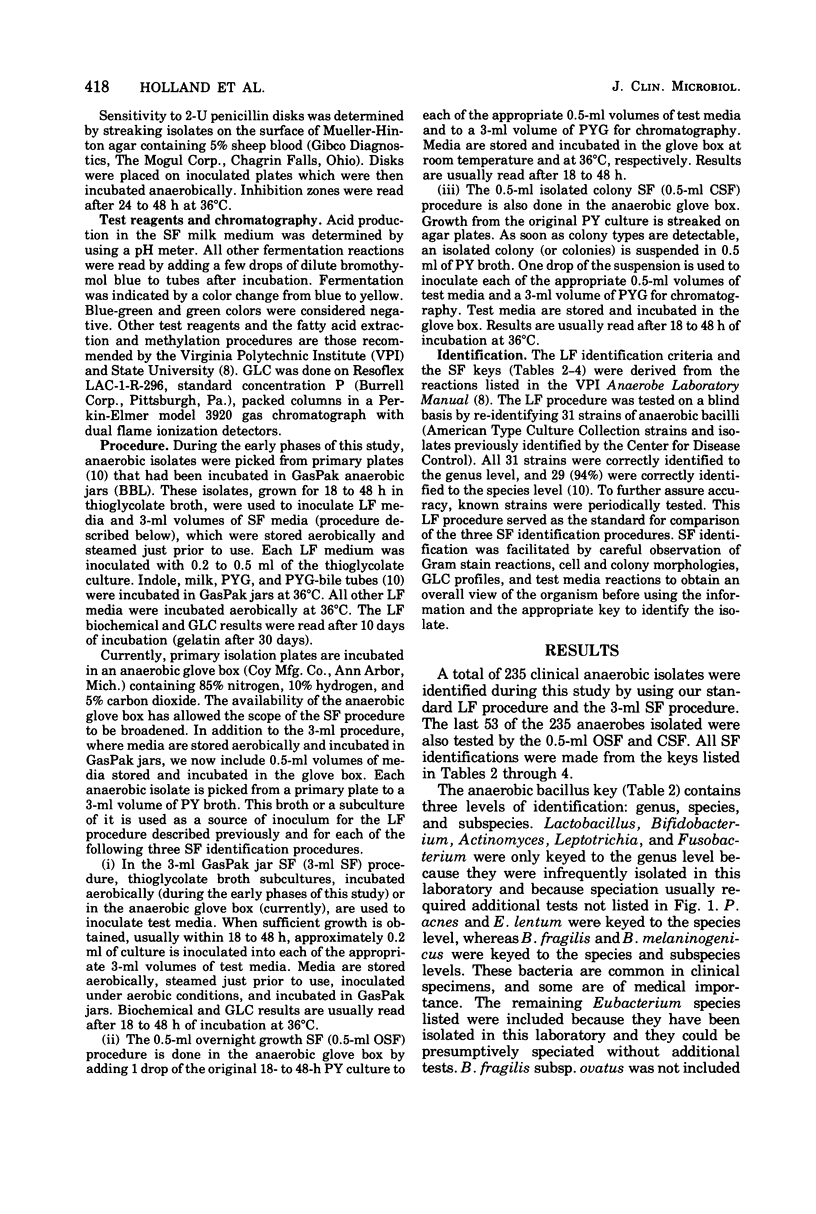
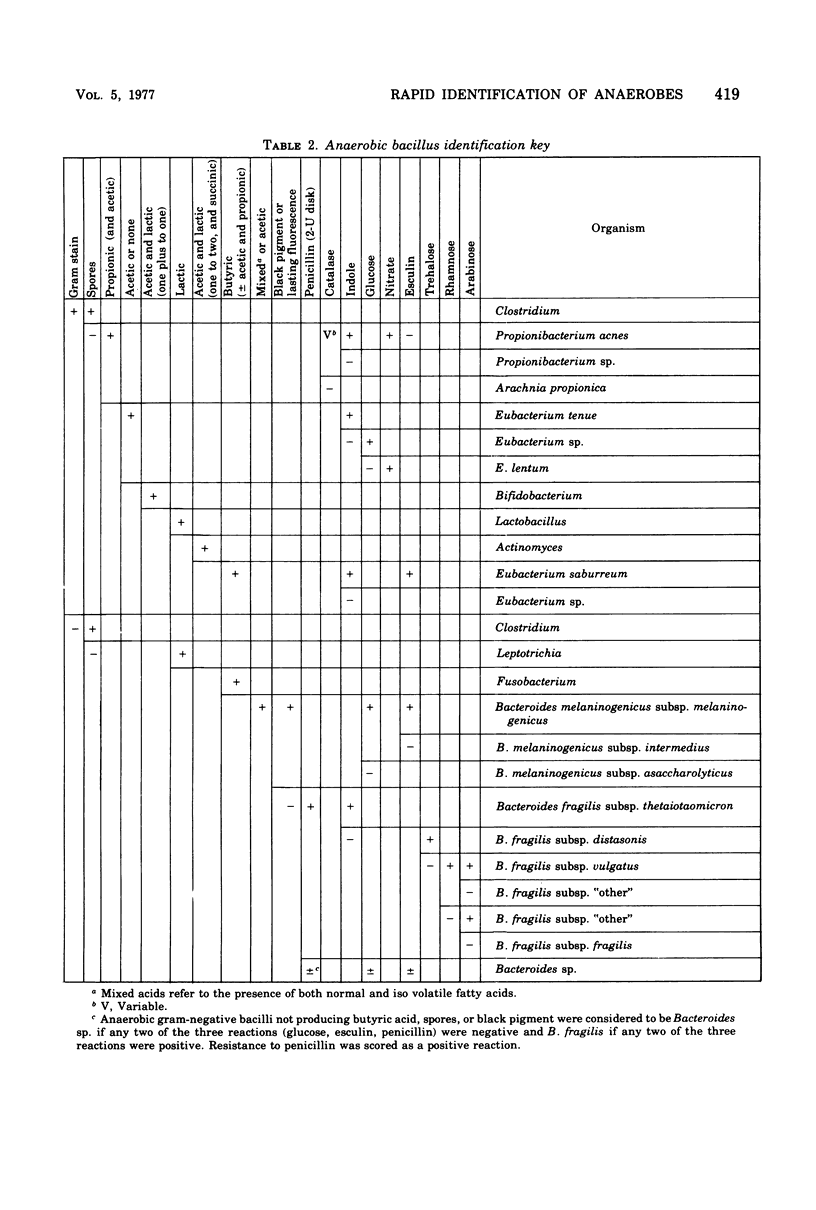
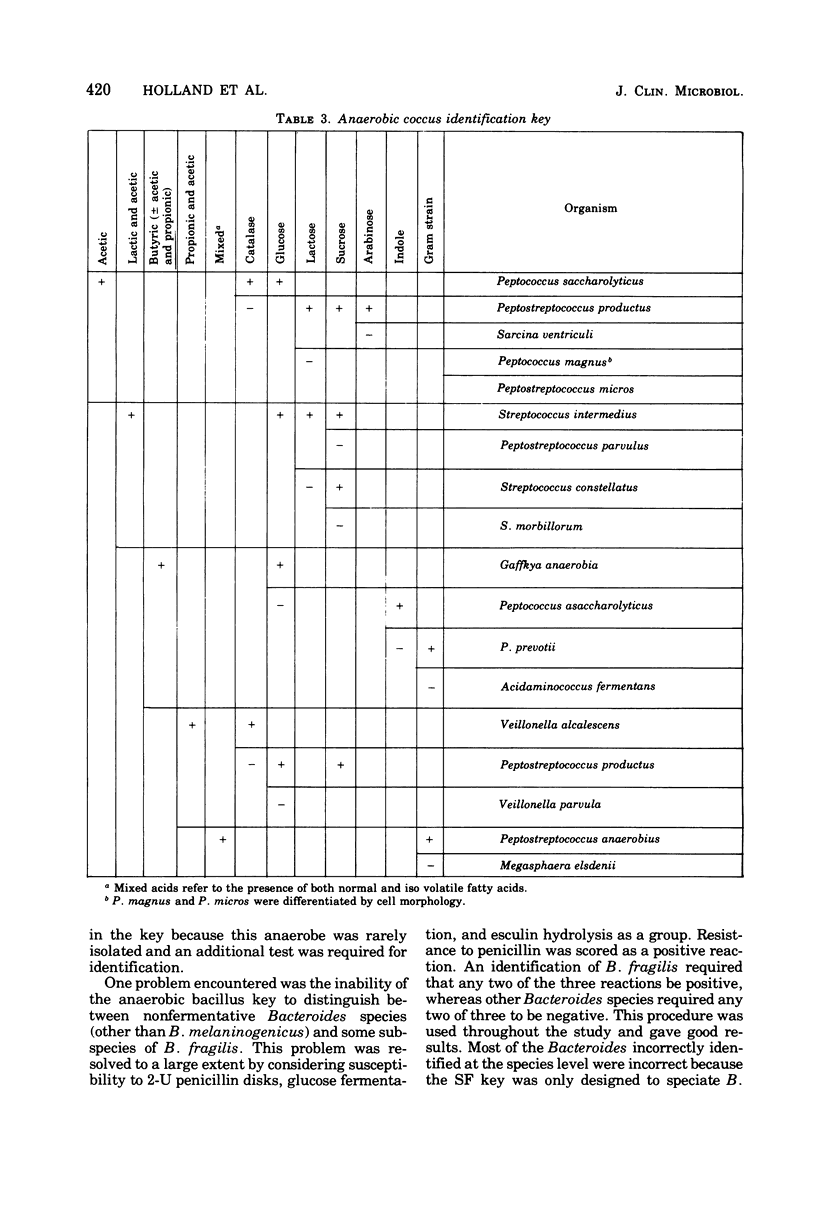
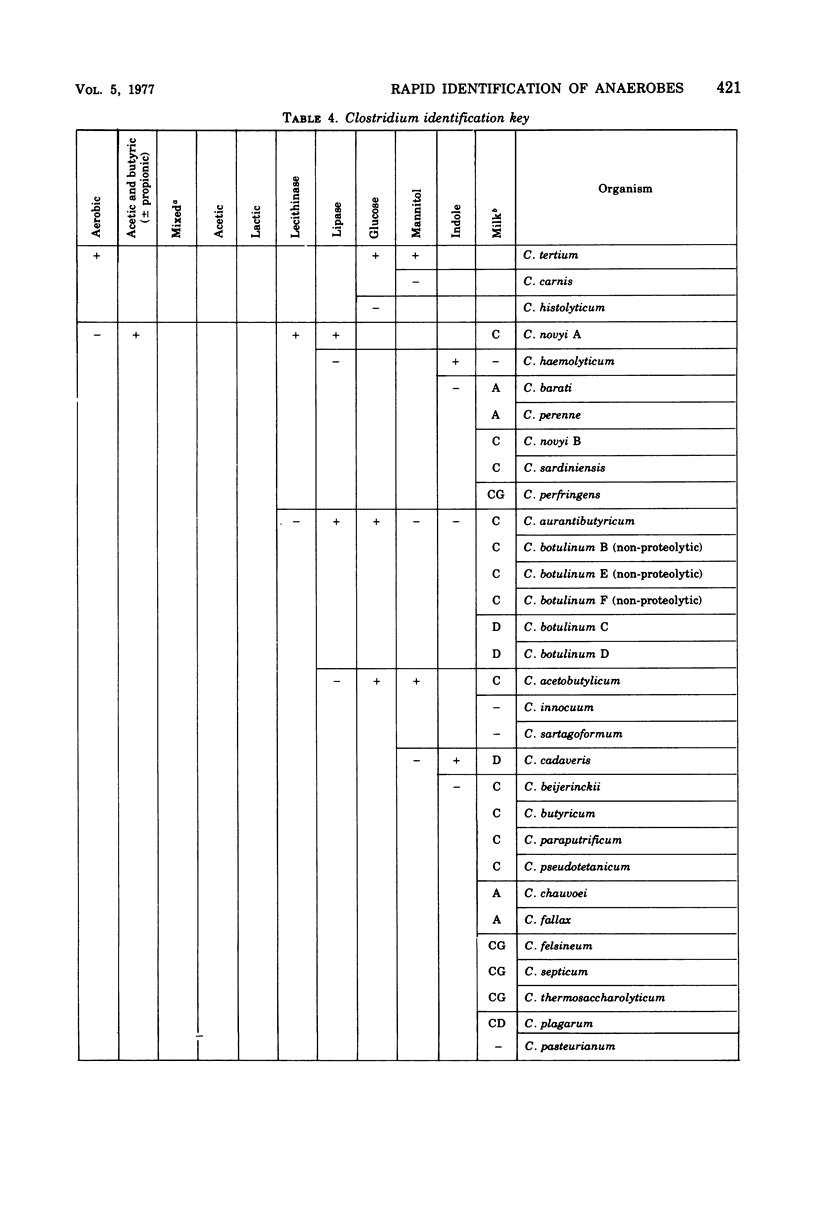
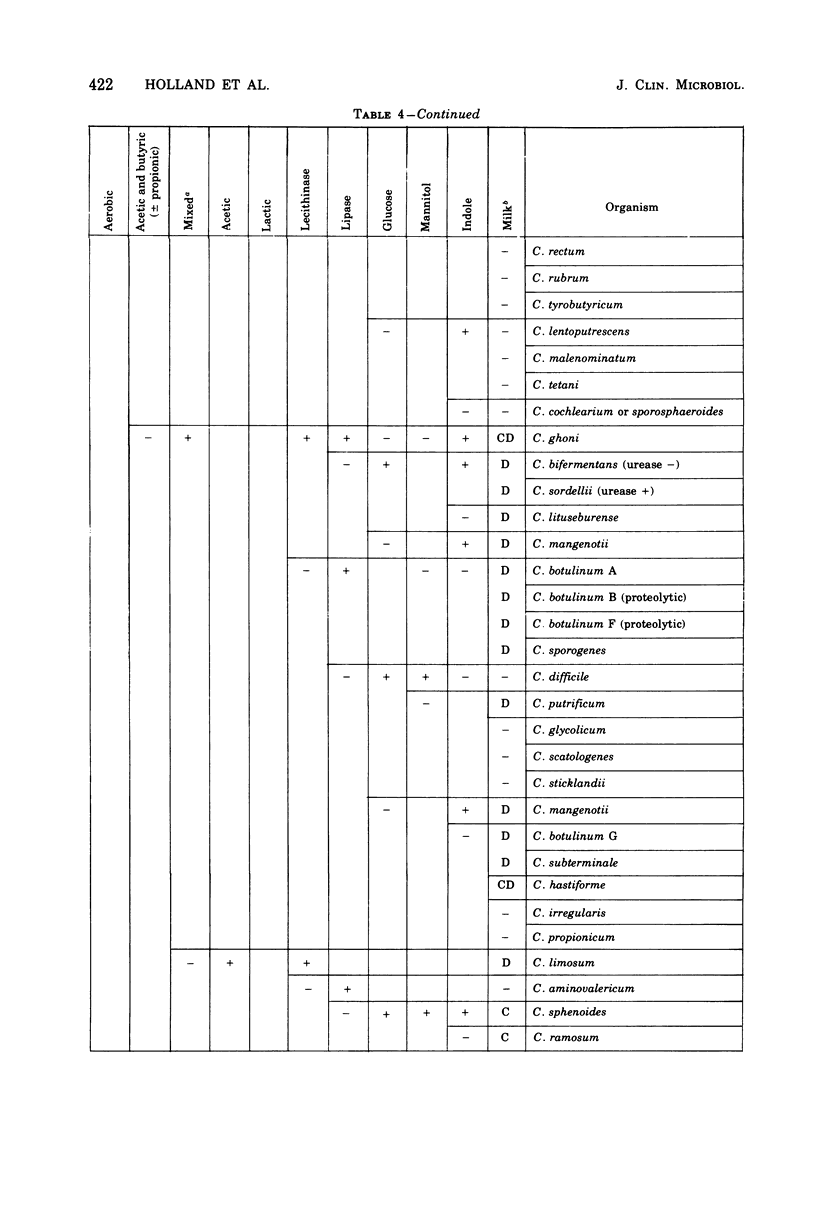
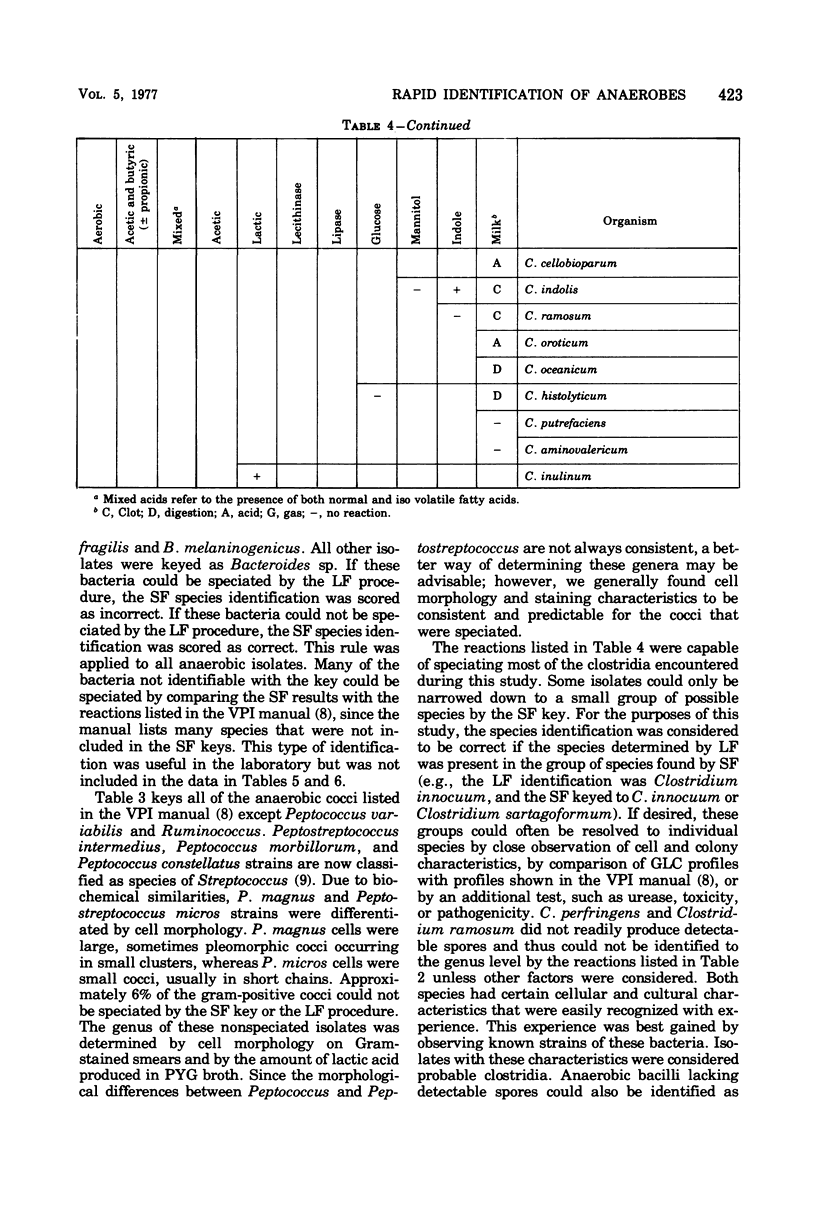
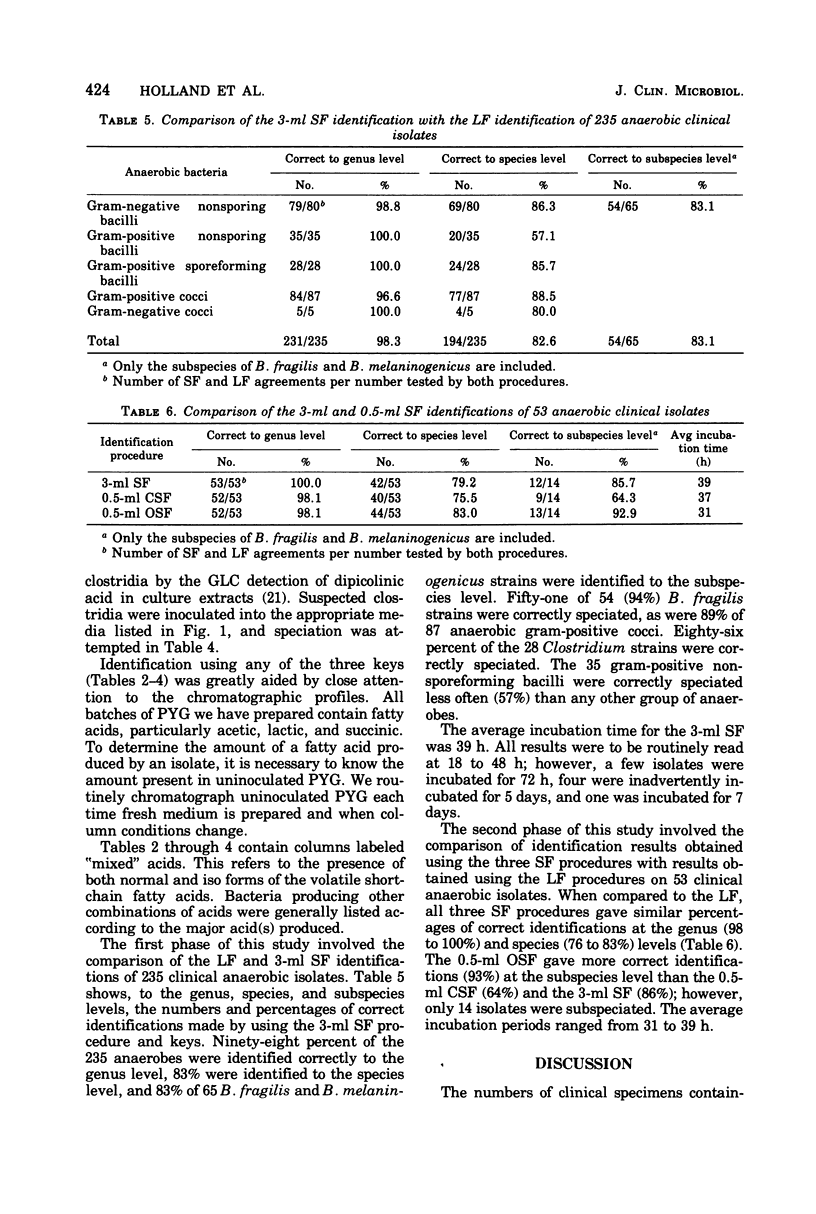
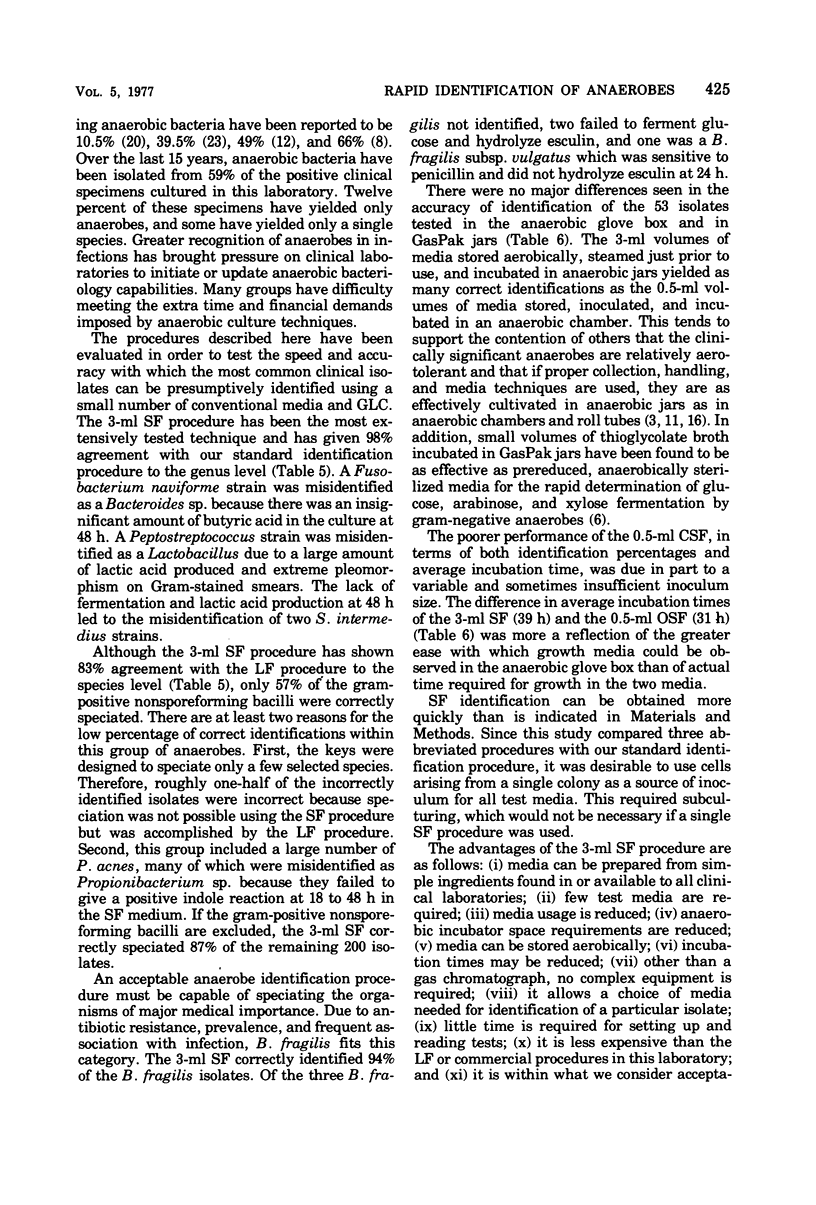
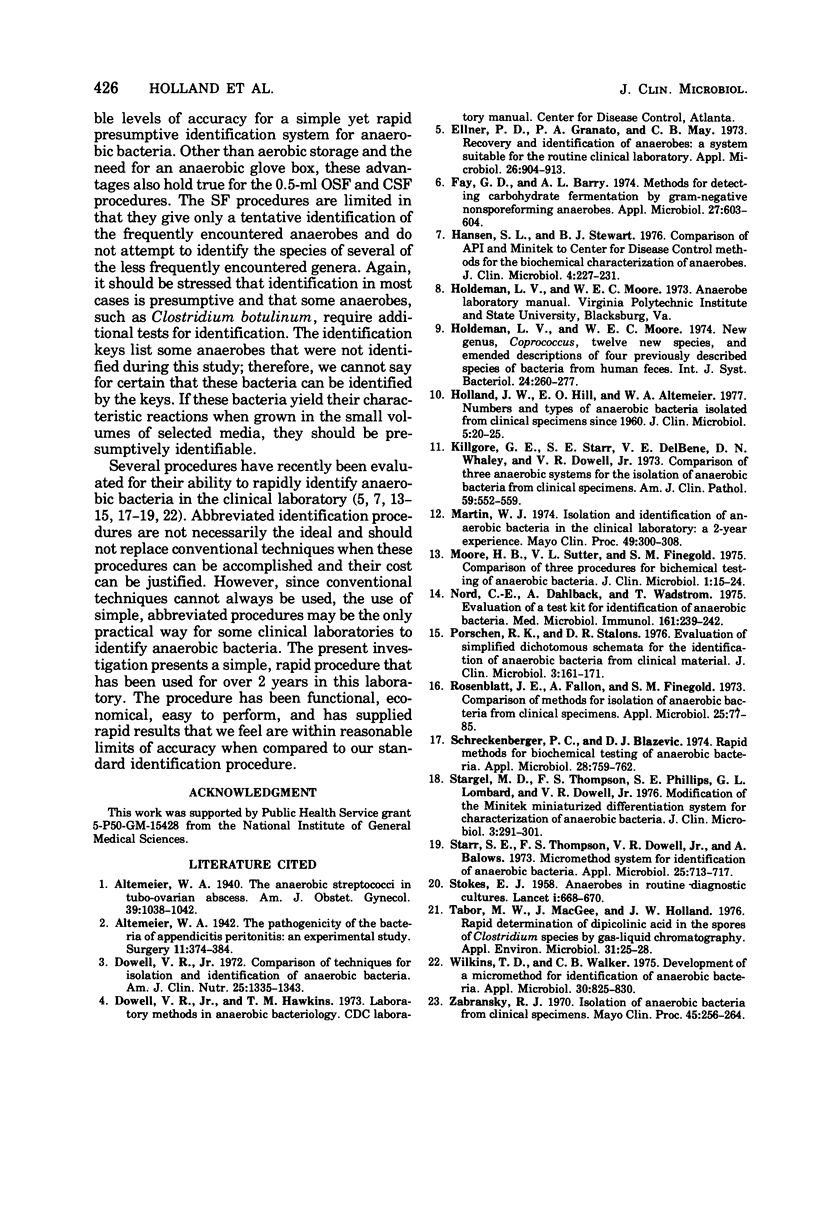
Selected References
These references are in PubMed. This may not be the complete list of references from this article.
- Dowell V. R., Jr Comparison of techniques for isolation and identification of anaerobic bacteria. Am J Clin Nutr. 1972 Dec;25(12):1335–1343. doi: 10.1093/ajcn/25.12.1335. [DOI] [PubMed] [Google Scholar]
- Ellner P. D., Granato P. A., May C. B. Recovery and identification of anaerobes: a system suitable for the routine clinical laboratory. Appl Microbiol. 1973 Dec;26(6):904–913. doi: 10.1128/am.26.6.904-913.1973. [DOI] [PMC free article] [PubMed] [Google Scholar]
- Fay G. D., Barry A. L. Methods for detecting carbohydrate fermentation by gram-negative nonsporeforming anaerobes. Appl Microbiol. 1974 Mar;27(3):603–604. doi: 10.1128/am.27.3.603-604.1974. [DOI] [PMC free article] [PubMed] [Google Scholar]
- Hansen S. L., Stewart B. J. Comparison of API and Minitek to Center for Disease Control methods for the biochemical characterization of anaerobes. J Clin Microbiol. 1976 Sep;4(3):227–231. doi: 10.1128/jcm.4.3.227-231.1976. [DOI] [PMC free article] [PubMed] [Google Scholar]
- Holland J. W., Hill E. O., Altemeier W. A. Numbers and types of anaerobic bacteria isolated from clinical specimens since 1960. J Clin Microbiol. 1977 Jan;5(1):20–25. doi: 10.1128/jcm.5.1.20-25.1977. [DOI] [PMC free article] [PubMed] [Google Scholar]
- Killgore G. E., Starr S. E., Del Bene V. E., Whaley D. N., Dowell V. R., Jr Comparison of three anaerobic systems for the isolation of anaerobic bacteria from clinical specimens. Am J Clin Pathol. 1973 Apr;59(4):552–559. doi: 10.1093/ajcp/59.4.552. [DOI] [PubMed] [Google Scholar]
- Martin W. J. Isolation and indentification of anaerobic bacteria in the clinical laboratory. A 2-year experience. Mayo Clin Proc. 1974 May;49(5):300–308. [PubMed] [Google Scholar]
- Moore H. B., Sutter V. L., Finegold S. M. Comparison of three procedures for biochemical testing of anaerobic bacteria. J Clin Microbiol. 1975 Jan;1(1):15–24. doi: 10.1128/jcm.1.1.15-24.1975. [DOI] [PMC free article] [PubMed] [Google Scholar]
- Nord C-E, Dahlbäck A., Wadström T. Evaluation of a test kit for identification of anaerobic bacteria. Med Microbiol Immunol. 1975 Sep 19;161(4):239–242. doi: 10.1007/BF02122711. [DOI] [PubMed] [Google Scholar]
- Porschen R. K., Stalons D. R. Evaluation of simplified dichotomous schemata for the identification of anaerobic bacteria from clinical material. J Clin Microbiol. 1976 Feb;3(2):161–171. doi: 10.1128/jcm.3.2.161-171.1976. [DOI] [PMC free article] [PubMed] [Google Scholar]
- Rosenblatt J. E., Fallon A., Finegold S. M. Comparison of methods for isolation of anaerobic bacteria from clinical specimens. Appl Microbiol. 1973 Jan;25(1):77–85. doi: 10.1128/am.25.1.77-85.1973. [DOI] [PMC free article] [PubMed] [Google Scholar]
- STOKES E. J. Anaerobes in routine diagnostic cultures. Lancet. 1958 Mar 29;1(7022):668–670. doi: 10.1016/s0140-6736(58)91087-0. [DOI] [PubMed] [Google Scholar]
- Schreckenberger P. C., Blazevic D. J. Rapid methods for biochemical testing of anaerobic bacteria. Appl Microbiol. 1974 Nov;28(5):759–762. doi: 10.1128/am.28.5.759-762.1974. [DOI] [PMC free article] [PubMed] [Google Scholar]
- Stargel D., Thompson F. S., Phillips S. E., Lombard G. L., Dowell V. R., Jr Modification of the Minitek Miniaturized Differentiation System for characterization of anaerobic bacteria. J Clin Microbiol. 1976 Mar;3(3):291–301. doi: 10.1128/jcm.3.3.291-301.1976. [DOI] [PMC free article] [PubMed] [Google Scholar]
- Starr S. E., Thompson F. S., Dowell V. R., Jr, Balows A. Micromethod system for identification of anaerobic bacteria. Appl Microbiol. 1973 May;25(5):713–717. doi: 10.1128/am.25.5.713-717.1973. [DOI] [PMC free article] [PubMed] [Google Scholar]
- Tabor M. W., MacGee J., Holland J. W. Rapid determination of dipicolinic acid in the spores of Clostridium species by gas-liquid chromatography. Appl Environ Microbiol. 1976 Jan;31(1):25–28. doi: 10.1128/aem.31.1.25-28.1976. [DOI] [PMC free article] [PubMed] [Google Scholar]
- Wilkins T. D., Walker C. B. Development of a micromethod for identification of anaerobic bacteria. Appl Microbiol. 1975 Nov;30(5):825–830. doi: 10.1128/am.30.5.825-830.1975. [DOI] [PMC free article] [PubMed] [Google Scholar]
- Zabransky R. J. Isolation of anaerobic bacteria from clinical specimens. Mayo Clin Proc. 1970 Apr;45(4):256–264. [PubMed] [Google Scholar]


